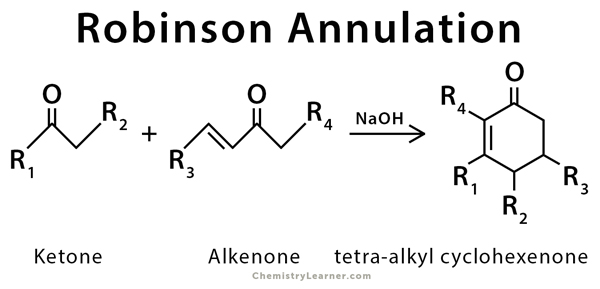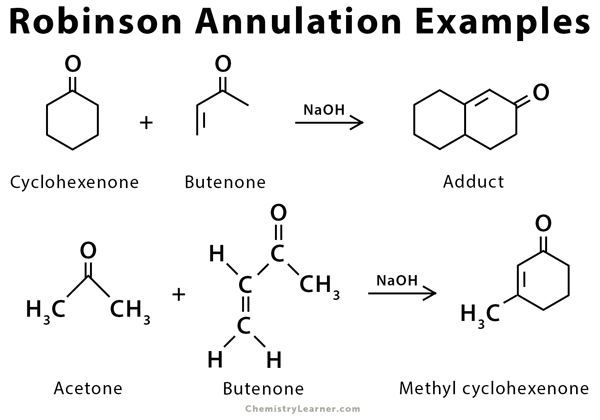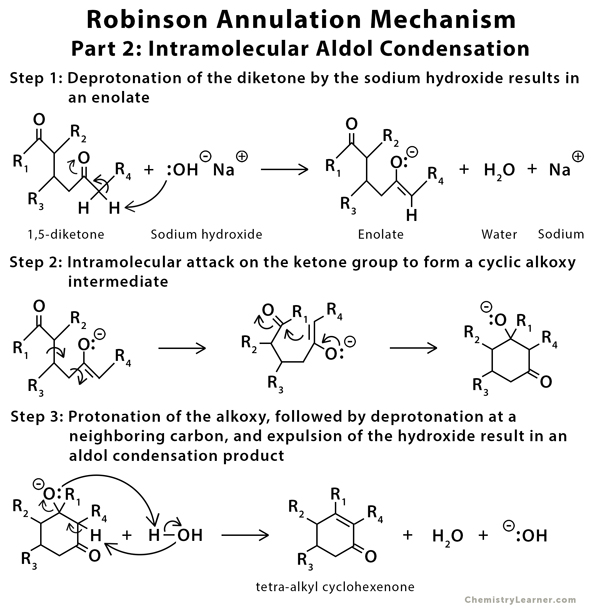Robinson Annulation
Definition: What is Robinson Annulation?
Robinson annulation is an organic chemical reaction used to construct a six-membered ring structure. This method uses a ketone and an α, β-unsaturated ketone to form a bicyclic system containing a substituted cyclohexenone system in a sequential combination of Michael addition and intramolecular aldol condensation. The word ‘annulation’ means ‘building a ring.’ [1-5]
The history of this chemical reaction goes back to 1935 when British organic chemist and Nobel laureate Robert Robinson created a six-member ring by forming three new carbon-carbon bonds.
Examples of Robinson Annulation [6]
Mechanism of Robinson Annulation [6-8]

Robinson Annulation Mechanism Michael Addition
Applications of Robinson Annulation [4,6]
Robinson annulation is used in the synthesis of various useful products such as antibiotics and steroids. Cyclohexenone and its derivatives prepared through this method are used in various natural products.
- References
- Definition – Chem.ucla.edu
- Definition – Chem.libretexts.org
- Definition and mechanism – Ochempal.org
- Definition and mechanism – Byjus.com
- Definition and mechanism – Chemistryscore.com
- Mechanism – Masterorganicchemistry.com
- Mechanism – Name-reaction.com
- Mechanism – Chem.ucalgary.ca







